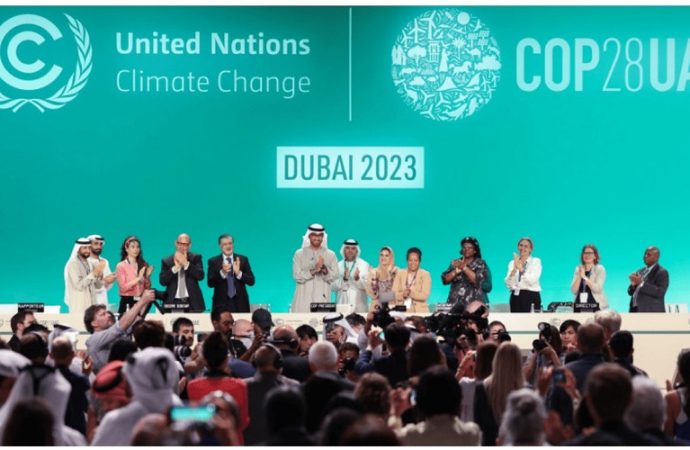Author Recent Posts Asfand Yar Khan Latest posts by Asfand Yar Khan (see all) Outcomes of the Shanghai Cooperation Organisation Heads of Government Summit – October 28, 2024 Deliberations and Outcomes of the 79th Session of the UNGA – October 11, 2024 SCO in Pakistan: Can it bring Normalcy in Indo Pak Relations? – September
Almost all countries in the world agreed to phase out fossil fuels at the recent COP 28, but ground realities raise considerable contradictions. Such an agreement has been reached for the first time in nearly three decades of negotiations on climate change at the international level. Analysts and experts criticized the COP 28 deliberations that ended with a text that does not provide any solution to minimize the massive production of non-renewable sources of energy such as coal, oil, and gas. Unlike the success of COP 27, emerging nations did not seem too hopeful with the agreements of COP 28 as no plan was chalked out to help developing countries in phasing out fossils. Financial commitments made by developed countries of the world may have made climate agreements look more realistic and durable, something the text of COP 28 lacked.
The fact that the international commitment to phase out fossils came out of a conference held in Dubai is the first contradiction that needs to be pointed out. It has also been reported that the UAE officials utilized the COP platform to carry out ‘lobbying’ and finalize oil deals with other nations. World’s leading oil exporters Saudi Arabia and the UAE presented a charter urging companies participating to go carbon free only for their own operations by year 2050. The charter does not include the vast amount of oil sole by these companies that contributes more than ninety percent to the climate crisis in the world. Such a pledge would have no significant impact on the climate crisis as it does not include any plan to cut down demand for fossils.
Renewable sources of energy are cheaper in use, but they require massive capital in the beginning, especially in developing countries where interest and exchange rates influence the prices of products such as solar panels. There are rarely any bilateral or multilateral agreements between countries that involve duty free or cheaper sales of renewable energy products. Unfortunately, no concrete steps were taken at the COP 28 to ensure the supply of solar or wind equipment to developing nations at cheaper rates, leaving two third of the countries clueless and confused on how to meet the pledges. This made the conference look rather incomplete and superficial as no visible progress at the implementation level was witnessed. Deliberations at the COP 28 led to widespread belief that the conference ended up with unnecessary sloganeering and very few practical actions.
One positive result to come out of COP 28 was the complete operationalization of much anticipated ‘loss and damage’ fund, that intends to help vulnerable developing countries to cope with the devastations caused by climate change. Despite pledges made by the developed world at COP 27, experts view the amount gathered under the much anticipated ‘fund’ as insufficient and “not even peanuts”. Integrated Assessment for Identifying Climate Finance Needs for Loss and Damage found out that the developing countries may face severe damages worth USD 580 billion caused by climate change by year 2030. Considering the extent of vulnerabilities of poor nations, international pledges are lagging far behind the costs of extreme disasters. COP 28 did not look like a conference to declare an international climate emergency.
COP28 also saw Parties agree to Azerbaijan as host of COP29 from 11-22 November 2024, and Brazil as COP30 host from 10-21 November 2025. The next two years will be critical. At COP29, governments must establish a new climate finance goal, reflecting the scale and urgency of the climate challenge. And at COP30, they must come prepared with new nationally determined contributions that are economy-wide, cover all greenhouse gases and are fully aligned with the 1.5°C temperature limit. The conference also saw several announcements to boost the resilience of food and public health systems, and to reduce emissions related to agriculture and methane. However, resolving the financial challenges surrounding climate change remains a complex and evolving process, requiring concerted efforts from nations worldwide. The urgency of the matter is underscored by the need for tangible and equitable solutions to secure a sustainable future for all.
- Outcomes of the Shanghai Cooperation Organisation Heads of Government Summit - October 28, 2024
- Deliberations and Outcomes of the 79th Session of the UNGA - October 11, 2024
- SCO in Pakistan: Can it bring Normalcy in Indo Pak Relations? - September 26, 2024












Leave a Comment
Your email address will not be published. Required fields are marked with *